-
Posts
1,403 -
Joined
-
Last visited
-
Days Won
9
Content Type
Profiles
Forums
Gallery
Downloads
Blogs
Events
Store
Aircraft
Resources
Tutorials
Articles
Classifieds
Movies
Books
Community Map
Quizzes
Posts posted by pylon500
-
-
Couldn't really tell you actual weights, but the 233 is a lightweight version of the 235, not sure what they did, but I think they were aiming it at the LSA market.
-
 1
1
-
-
Hi Pylon 500 - "Lycoming 0-233 installed." these range from 100 -116 hp - any idea which one ?
Don't know a whole lot about Lycomings, but I suspect the power output is just related to what rpm you want to operate it at?
Been a few years since I flew this, but I thought take off was around 2700?
-
Just a s a side note for anyone interested, there is an extensively modified (but finished and flying) J200 possibly coming up for sale.
Mods include;
Tailwheel conversion.
Lycoming 0-233 installed.
Original ignition replaced with full electronic.
Auto pilot.
Enlarged tailplane.
I've got a few hours in this thing, and it's a beast!
Can't remember the cruise speed, but in excess of 100kts (like 120Kts?)
Owner is getting ready to fully retire with back problems, which make getting in and out, as well as sitting for long periods of time, a bit painful.
-
Hi Arthur,
That photograph is the Hornet isnt it? I thought the wasp was the two seat tandem tail wheel; at least the prototype I saw was.
?
Sorry, a little confusion there...
The above photo is a view out of the Wasp, the Hornet has a centre vertical brace in the windscreen, and as can be seen, this is a side by side aircraft.
Quick bit of (unofficial) history.
Ole's first product was the Hornet STOL, which is the highwing, two seat side by side taildragger, and still in production.
He then made the Wasp which is a mid wing, two seat side by side tricycle gear, notable for it's forward swept wings to get the pilots in front of the main spar for visibility. (Discontinued)
His next machine was the Bushman, which was an oversized tandem Hornet (two built) which led to the Hornet 'Cub' which is a similarly sized tandem version of the Hornet, and both are still in orderable.
The latest variation has been the Flamingo, which was designed as a Super Slow machine, used to tow hang gliders.
It achieved most of the flight goals, but couldn't compete with the price of the basic dacron and tube Moyes Dragonfly.
Pictures of these machines can be seen on his website; http://www.aircraftkits.com.au/
-
 1
1
-
-
Anyone else see my attachments? I just get the oops message...
As for J3300 vs R912s weights, the totally installed and running weight of the 912s is probably just a little higher than the 3300 after you add two radiators, coolant and an oil tank.
Obviously a 914 would be heavier again.
I know there's been a few '100' series Jabs with 912's fitted, and balance was a problem, but the length of a J230 hardly notices it.
Going to repost the attachments just in case... (I think last time I must have hit Preview instead of Post)
-
 3
3
-
 1
1
-
-
For a start, you don't need to go to the expense of a 914 when cross fitting.
I flew an original J230 down to have the Rotax mod done to it, a 912s was installed, it was test flown (by me), and then ferried back to it's owner.
With the 912s, the performance was basically the same, it could cruise at 115kts if pushed, although I tend to be a little more casual and (as shown in attached) would sit on 105kts @ 4930rpm.
Some like to push 912's harder, and they'll take it, but in the 5000 rpm range they only drink around 16Lph.
This aircraft would also climb at 1200fpm @ 70kts with no risk of overheating.
I can't remember if the battery was moved down the back for CofG reasons, but remember, 230's are nose-heavy two up, but nice solo.
If you're used to the sound of the old Jab six, the Rotax 'buzz' can take a bit to get used to, but you're not listening to every valve movement waiting for something to happen.
[ATTACH=full]53405[/ATTACH]
[ATTACH=full]53407[/ATTACH]
Well that's annoying, wrote this a couple of days ago, but forgot to hit the post button!
DOH!
-
-
Flying solo...
I wonder if they (CASA/NTSB) will be able to determine the CofG at the time of the accident...
-
Quick reply would be that the original concept was for a docile, high visibility trainer that showed promise, but required more development and even a lot more investment to get to a certified stage.
As for performance, the ones I flew seemed happy cruising in the 75~85kt range with the 912s, or could probably cruise at 95~100kts if you wanted to pour fuel down it's throat.
Had good visibility and I guess average handling.
No major flaws, just a lot of little tweaks that took up too much of the Hornet production time.
-
I think Ole only built about five of them, what did you want to know?
-
'Length and span have no relationship'
As in my earlier post, this technically is true, flying wing has no fuse ratio, F104 is way out the other side.
The technical design ratio is wing chord to fuse length, although arbitrarily stating 4:1 is a little bold.
Back in my day of designing control line stunt models, 2.5~3:1 gave a nice balance, but in real aircraft it can vary widely.
A Piper Cherokee would be around 2.5:1, a 737 might be around 4:1 and a performance sailplane would be up near 7:1 for the reasons I mentioned earlier.
It comes down to design goal criteria.
-
Lot of timber everywhere, looks like it may have been an Osprey seaplane?
-
 1
1
-
-
[ATTACH type=full" width="556px" alt="1588848822651.png]53012[/ATTACH]
I'm looking at the build up photo, and assuming that the 'airfoil' shape on the top of the cabin is later cut off, and the one piece wing sat on the now flat top?
Just seemed odd to include that shape only to cut it off later?
The alternative is that you have a two piece wing sliding onto a spar of some type? (not a very durable idea for a trainer)
-
Seven degrees?
Video didn't look like that much, that said, fifteen degrees would be a nice stable platform so it matches what I was thinking by doubling what was shown in the video.
If you wanted to extend the wing with a centre section, I would look at having the tips at a similar height as they would have been if from a single 15º dihedral at the centre.
ie; the outer panels would have more angle to them to reach the same point. (this is called polyhedral)
Polyhedral wings can range in their dynamic, but a good all round concept from a weight, strength and stability standpoint is for the centre section to be at least one third of the overall span.
Any less and the span loading at the joint is almost as high (from a modelling view) as a single dihedral joint.
-
At this stage there are no ailerons, so snap rolls are out of the question, unless I twist the wing by accident.
If you're not fitting ailerons, you may want to add a little more dihedral than shown in the video, only an extra inch per side, but that will make it a little more stable while giving better roll response.
-
 1
1
-
-
Hey there, don't want to derail this thread, so go over to;
Just Bragging and I'll try to get back into more regular posting there.
-
OK folks, just reviving this old thread for chatting purposes...
Just a quick little history of my 'Stollite';
Using the wings of a previously upgraded ultralight, myself and a then apprentice with me at Bankstown, threw together (over three years) an airframe using very standardised all metal structural concepts ie; Cherrokee styled wing tanks, Cessna styled cabin with all controls under floor, Beaver styled aft fuselage and tail group, and unfortunately a Jabiru/Vampire styled control system (you live and learn).
Originally powered by a Rotax 503 as a 95:10, until it failed with the aircraft being lightly damaged.
It was then rebuilt as a 19 class, and powered by a Rotax 582, until I blew that up, (long story for later), but fortunately this time the aircraft was unscathed.
I happen to have an 80hp Rotax 912 laying around for another project, so I 'borrowed' it and continued flying.
The irony here is that, while using the 912, I was always on the lookout for something more akin to the 582, which it flew well with, to replace the 912 so it could go into the other project.
Enter the BMW R100 conversion that was sitting in a hangar with no paperwork or exhaust, but a reasonable price.
BMW details;
This is (to the best that I can determine) about a 1985, 1000cc bike engine that has had a full aero conversion kit, I think it is an English kit?
The engine has an adaptor plate on the gearbox end (which is now the front) and has a Rotax 'C' box with a spragg slipping clutch (the prop free wheels).
Because the engine is now technically installed backwards, both pots have been swapped across, putting the exhausts on the forward end of the engine, and therefore the carbi's at the back.
The heads have been modified to have two plugs, a mod done on the bikes as well, and a dual electronic ignition system fitted.
Things I had to do;
The inlet ports face upwards, about 20º from horizontal, so I needed to get some angled manifold rubbers to fit the 54mm Bing carbs (x2).
Make a catch can for the crankcase breather.
Modify the oil filter to adapt to an oil cooler.
Fit an oil pressure sender.
Get an exhaust system made.
Operation;
I fitted a larger Stewart Warner tach to the aircraft, and I think I have the switches at the back sorted?
When it works, the motor runs out to near 6000rpm and flies the Stollite about the same as the 582 did, using the same prop.
The problem I'm having is something fuel related, where when I first ran it, it started easily and idled pretty well. I had been told they don't like to idle too slow, but sits fairly smoothly around 1800~2000rpm (bit like a 912). Problem was when I first opened it up, it got to around 4000rpm and started to run rough and miss until it would stop.
This turned out to be fuel starvation.
Checked the fuel system, which seemed OK, so added an electric pump.
Start the engine, run up to 4000 where it would start to miss, turn on the pump and it would come good, and continue on up to around 5800 with good hearty sound.
Throttle back towards 3000 with the pump on, and it would go rough again, and if the pump wasn't turned off, it would flood out and stop.
This is not highly conducive to relaxed flying (don't ask), so when I find time to go back and fiddle with it (like now while we're not flying much), I'm playing around with different pumps and float settings.
The flight photos are around 2000ft over the airport (always within gliding distance), back in around 2017(!) and I've probably done a total of about an hour in it!
Other projects had since crowded the Stollite to the back of the hangar until last month, when I figured out how to adapt a 912 mechanical fuel pump to the 'C' box.
Unfortunately it hasn't totally cured the problem and the 4 year old, non maintained battery, is almost stuffed, and now the other projects and some sideline work are pushing for attention.
I'll get there eventually.
-
 4
4
-
 1
1
-
-
I saw a Flying Flea derivative many years ago at The Oaks. I don't know where it came from, maybe Wedderburn, but it seemed to do all that was asked of it.
That was around the time Pylon 500 had his little Stolite parked there.
OMG! just Googled it. That would have been 20 or 21 yrs ago Arthur. Is it still flying?
Are you talking about the blue/silver 503 powered Flying Flea at the Oaks, or my Stollite, seen here flying (with it's latest motor, a BMW R100 conversion), over Taree...
Oh yes, I finally repainted it.
-
 2
2
-
-
Just a quick step outside the thread;
Looking into the 'Flea' came across something that had never occurred to me... a Flea GLIDER!
Enjoy;
http://claudel.dopp.free.fr/Les_planeurs/Descriptions_planeurs/Cosandey%20Pou%20Planeur/Cosandey_Pou-Planeur.htm
-
 1
1
-
-
Just a few observations...
Rudder horn 'above' the fuselage?
Apart from being a bit unsightly, there is now a hole on an upper surface, but should you (or another builder) desire a tail-dragger, much re-designing will be required.
Just a thought.
-
 1
1
-
-
you can make a lot of odd shapes fly that would be a disaster full size.
The Flying Flea.
Now I'm not sure if I countered the comment, or agreed with it?
-
It is pretty much a 'if it looks right' kind of thing.
The two primary things that generally relate to wingspan are; wing chord, which will give you aspect ratio, and; moment arm ratio, which boils down to the leverage that the tail has on the wing to control pitching moment and overall elevator authority.
Oddly, the 1.5:1 span/length ratio is probably pretty close with most gliders as well, but because the wing is narrow chord, the moment arm ratio is much higher, which then allows the use of much smaller (read less drag) tailplanes.
Shorter the moment arm ratio, the larger the tail to wing percentage needs to be...
-
 1
1
-
 1
1
-
 1
1
-
-
Welcome to the site, we have a building blog/discussion page further down;
https://www.recreationalflying.com/forums/aircraft-building-and-design-discussion.55/
(off to have a look...)
...
And I'm back.
Hmm, the fish eye lens photo of the motor makes it look HUGE.

-
 1
1
-
-
You should be able to transfer the build from 10 class to 19 class with little effort, save for the RAAus fees, which are a rort, but hey, welcome to the 'making a profit' recreational aviation company, and continue building 19-1103.
-
 1
1
-


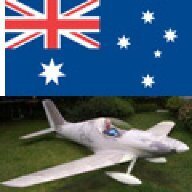



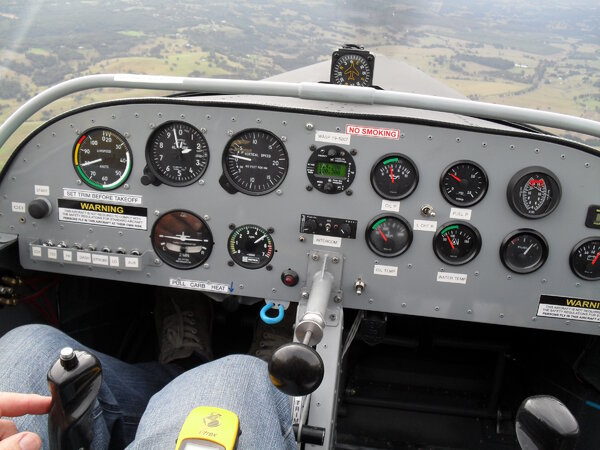

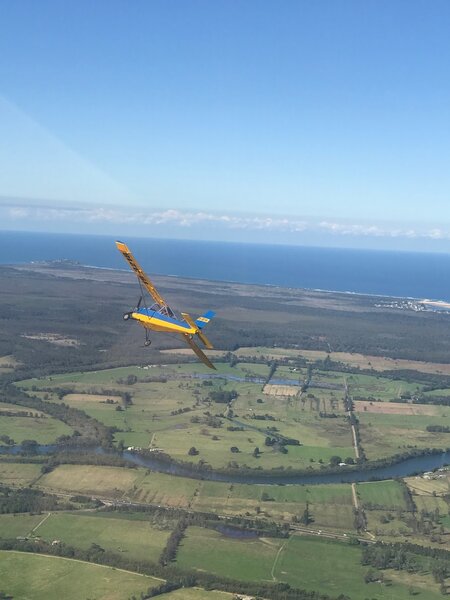
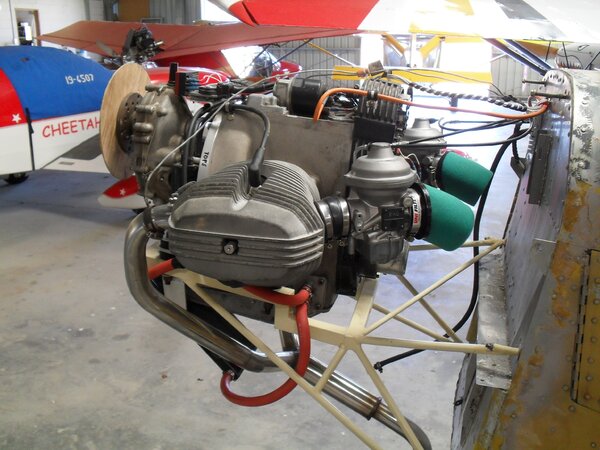
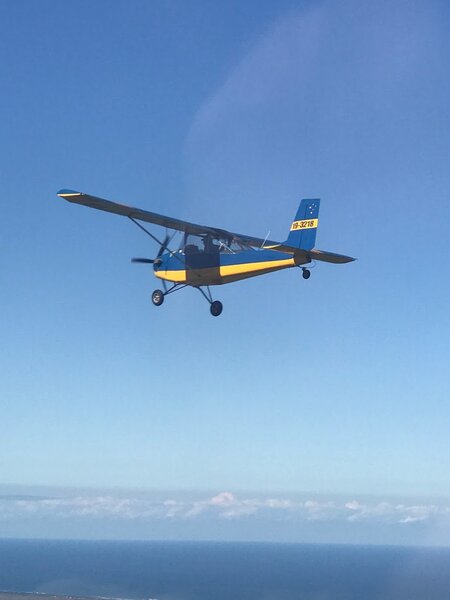
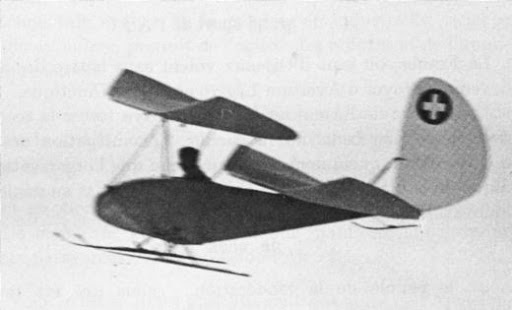
Rotax 912 Carburettors
in Aircraft General Discussion
Posted
I think a lot of the improvement comes from the fact that the 912is doesn't have carbi's!
It's fuel injected.
Not to highlight ancient technology, but with good EGT's and mixture control, the old Lycosuarus's probably doesn't do too bad, but remember, your driving an engine more than twice the size of a Rotax, for the same power.